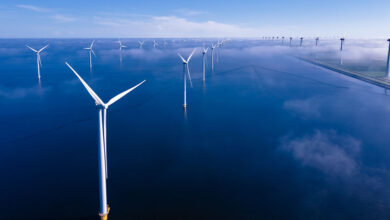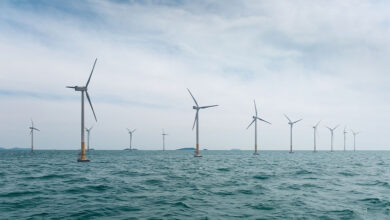Heat in the commercial and public sectors

Kevin Brady, Principal Officer leading the Business Energy and Gas Policy division at the Department of Environment, Climate and Communications, addressed Energy Ireland 2020 on changes to commercial and public sector heat being driven by the Programme for Government’s decarbonisation ambitions.
Emissions from heat use in the commercial and public sectors of 11 per cent and growing, are significant, explains Brady, adding that following on from the increased climate action ambition of the Programme for Government, sectoral targets and annual updates of the Climate Action Plan will be key drivers of emission reduction in these areas.
Brady outlines that while much focus is placed on the ‘big’ three sectors of electricity, transport and residential in regards to emissions from heating, the combined sub sectors of public services, commercial services and manufacturing make up 20 per cent of Ireland’s annual total final energy consumption.
On emissions, the three sub-sectors have followed an energy-wide trend of decline from 2005 to 2010, followed by steady rates to 2014, when levels began to rise again. Brady points to doubling of gas use share between the period 2005 to 2018, going from around 27 per cent to around 53 per cent, mainly at the expense of oil.
Renewable energy use in the three sub-sectors is around 10 per cent, a surprising figure when compared with the residential heat and transport sectors, which have levels of around 3 per cent renewable energy. The majority of renewable energy in the commercial and public sector is biomass and some renewable waste and biogas, explains Brady.
Compared to 2005, energy use for heat in the commercial and public sectors was down 11 per cent and emissions reduced 17 per cent by 2018. However, since 2014, energy use has increased by some 16 per cent and emissions are up 13 per cent, highlighting a trend of strong and steady growth in recent years.
The new commitments of the Programme for Government outline an average 7 per cent per annum reduction in overall greenhouse gas emissions from 2021 to 2030 (a 51 per cent reduction over the decade) and to achieving net zero emissions by 2050.
Brady states that the two distinct objectives associated with this commitment are the need for “an acceleration now” and a consideration for “all actions to be in keeping with net zero carbon by 2050”.
“By setting in stone, in government policy, to achieve net zero emissions by 2050, the more incremental elements that we are doing now need to change,” he adds.
Brady says that the sectoral emission targets and annual Climate Action Plan update will be key drivers for policy formation. “Following on from the Programme for Government, our next step is to review our existing policies and develop new policies to meet the new commitments. That includes reviewing all of our existing measures to be in keeping with a sustainable pathway to 2050.”
Brady outlines that the Department’s policy options of: energy efficiency first; electrification; renewable energy; district heating; and the decarbonisation of gas remain the same but the policy types, which have historically focussed on behaviour and incentives, are likely to shift to include greater levels of regulation and taxation.
As well as reviewing existing supports to align with the Programme for Government, the Department is planning an expansion of supports on the back of Budget 2021 and working to deliver a district heating policy framework. Additionally, a major piece of work being undertaken by Brady’s division is around how renewable gas can be supported, including assessing the role of green hydrogen going forward. Brady also points to the potential creation of a renewable energy obligation in the heat sector, pointing the absence of a socialisation of cost when compared to the electricity and transport sectors.
Concluding, Brady says: “The significant commitments in the Programme for Government will change everything we do and how we do it. The sectoral targets will be the key drivers of policy formation going forward and that’s where you’ll see the changes and the differentials.
“Even though we’re going to talk a lot more about emissions reduction, energy efficiency and renewable energy in the sector will continue to be key enablers but they will be enablers of greenhouse gas emission reduction.”





